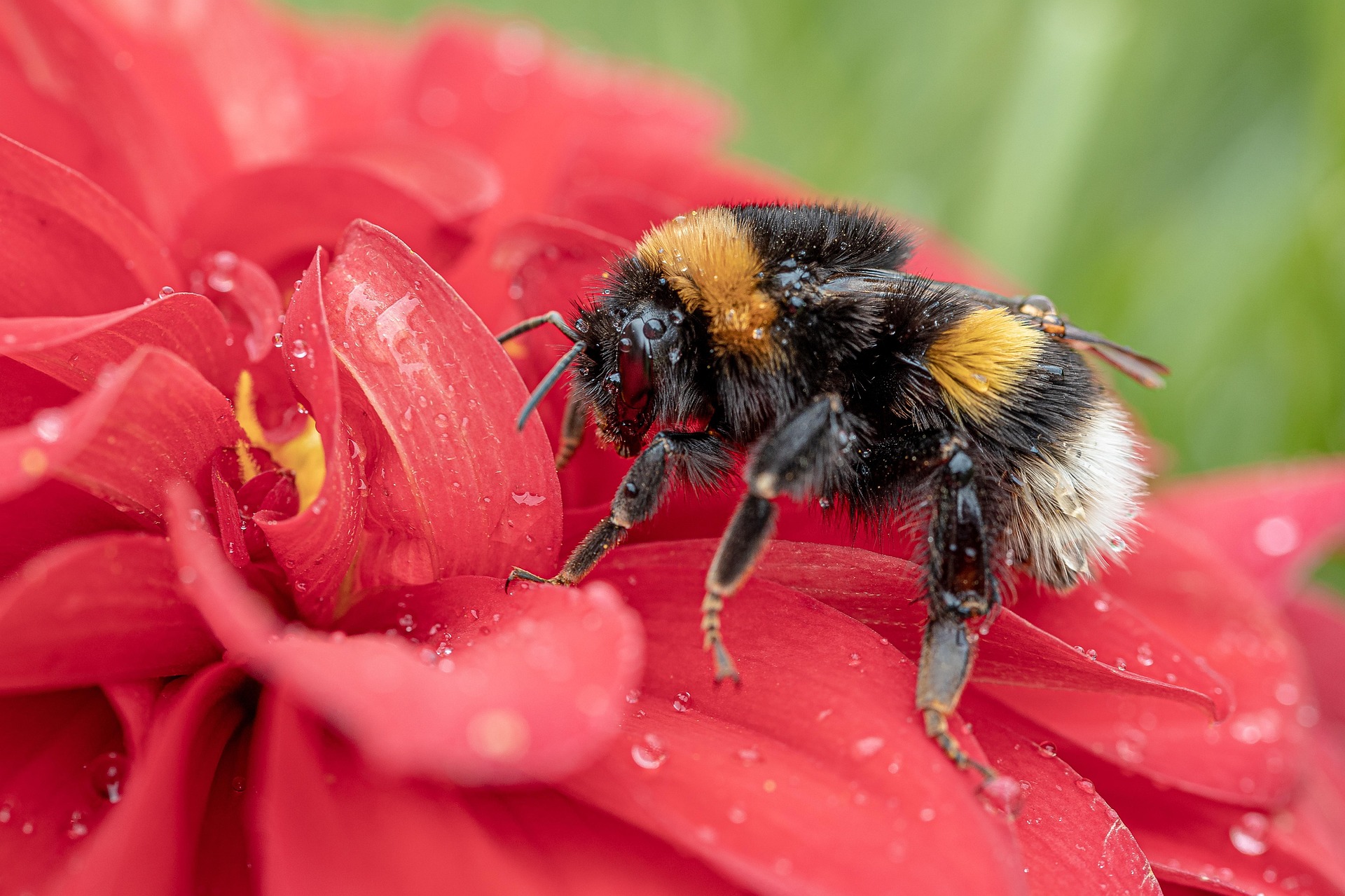 This next animal is one that you will see in spring and summer buzzing around flowers and blossom. You will often see them flying around in parks and gardens. Don't be frightened, as they are more interested in getting food than they are in you. They can sting, but only if you accidentally put your hand on them.
This next animal is one that you will see in spring and summer buzzing around flowers and blossom. You will often see them flying around in parks and gardens. Don't be frightened, as they are more interested in getting food than they are in you. They can sting, but only if you accidentally put your hand on them.

There are many different species of bumblebee, and they are quite different from the honey bee. Bumblebees are larger, rounder, and more hairy compared to either honey bees or wasps. The honey bee usually has stronger black markings, while the wasp has clearly defined yellow and black stripes. Bumblebees are named after the buzzing, humming, or bumbling sound that they make when flying. It is thought that this may be a means of communication.
The home of a bumblebee is a nest, which is often built underground. The nest is home to a small number of bees and is headed by a large Queen. The worker bees (the females) leave the nest in search of nectar and pollen. They gather nectar from flowers with their long hairy tongues. The pollen from the flower sticks to their body and the worker bees collect it in pollen baskets on their legs. The plants are pollinated by the bees as they accidentally transfer the pollen from one plant to another. Nectar and polen are taken back to the nest to be stored as food for the Queen and young bee larvae. The workers and drones (the males) die in the cold weather, but the Queen hibernates until she produces new generations of workers in the spring and drones in the early summer. Queens of the Buff-Tailed Bumblebee can often be seen flying on warmer winter days when other bumblebees are still hibernating.
Bees of all kinds have declined in numbers in recent years and it is important that we look after them to conserve the species.
 We are now going to move further along the embankment to the final post in King George V Park. You'll find this below the steps near the play area.
We are now going to move further along the embankment to the final post in King George V Park. You'll find this below the steps near the play area.
When you get to the next post PRESS THIS BUTTON